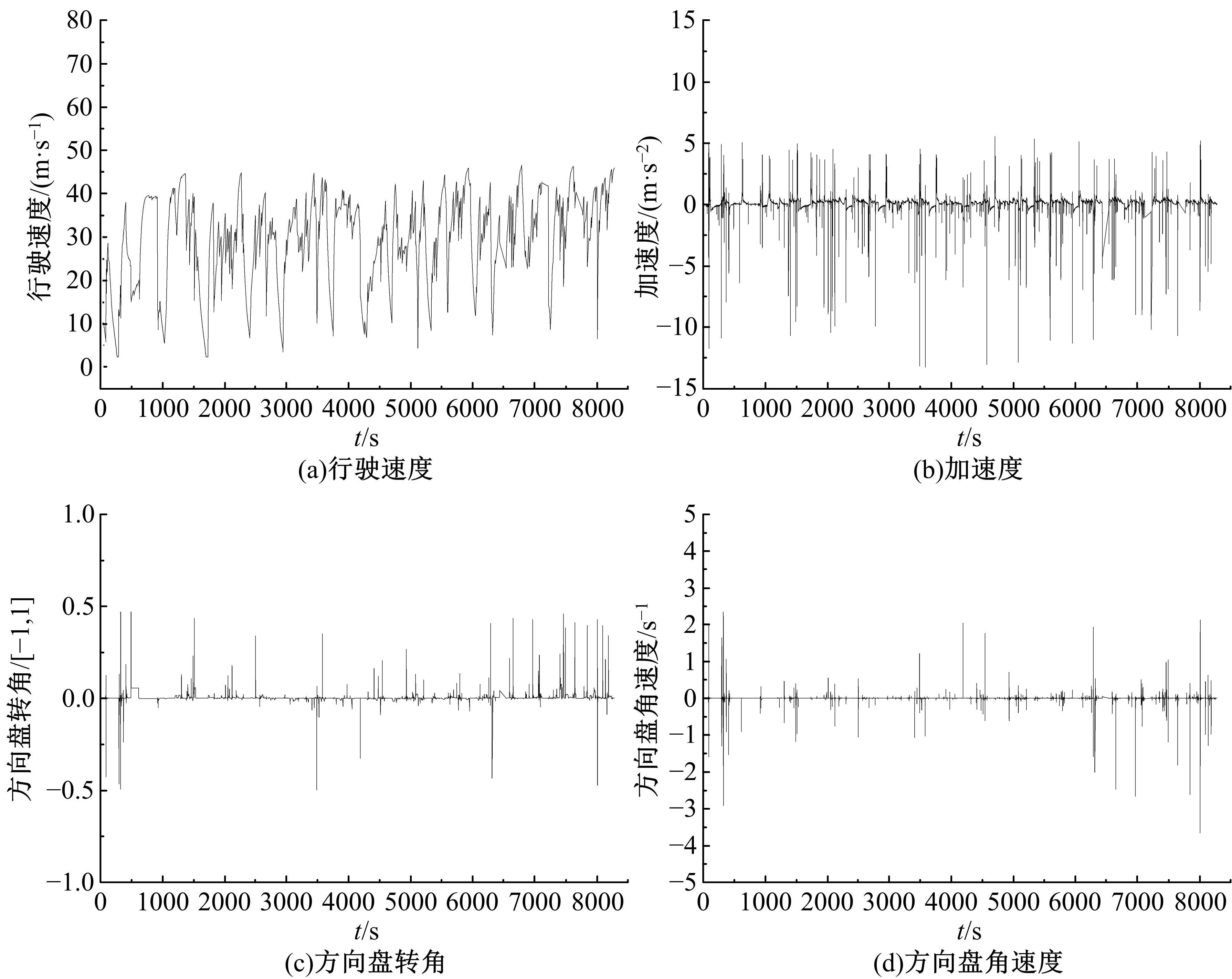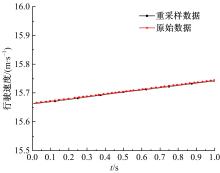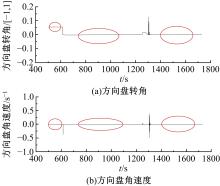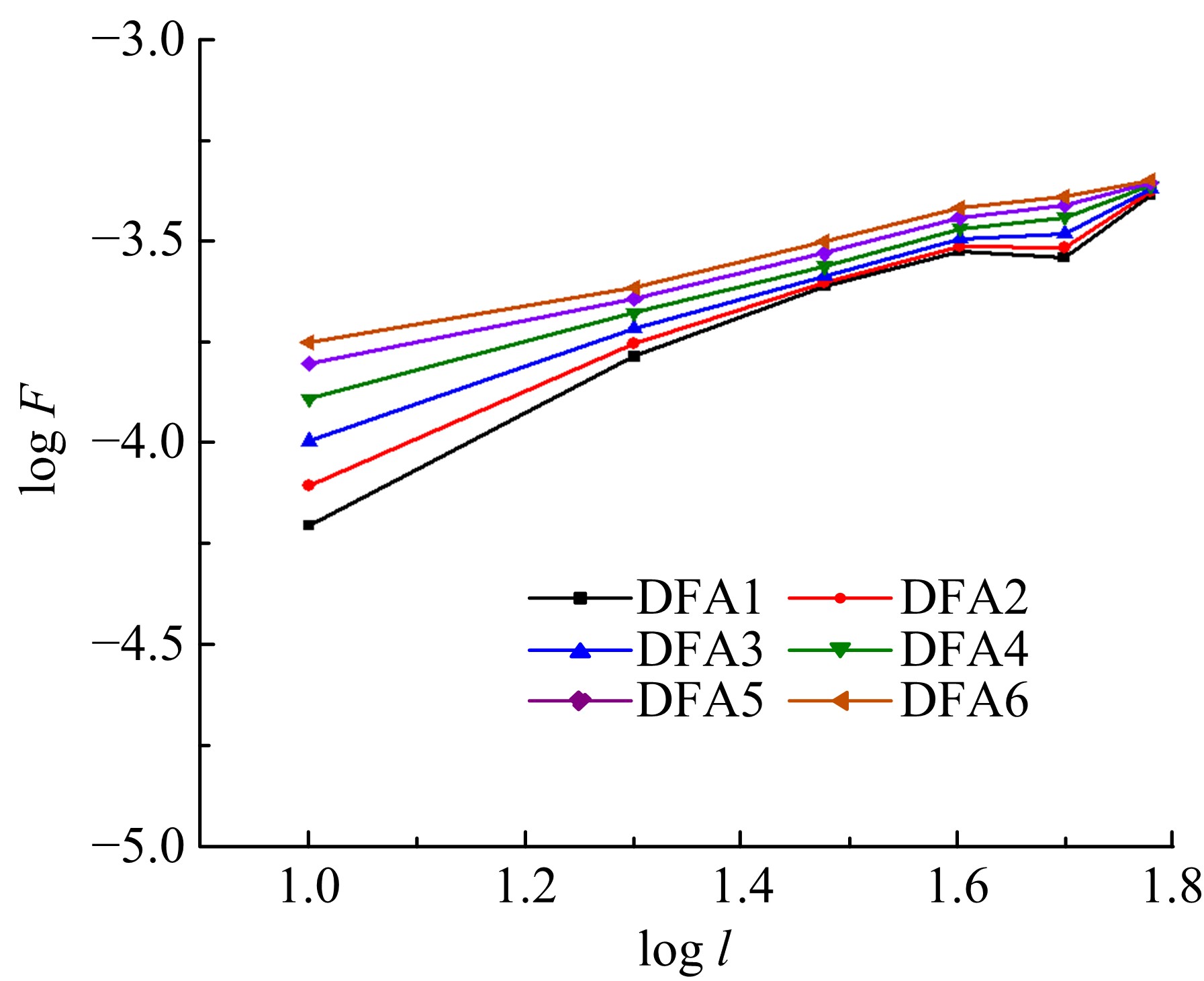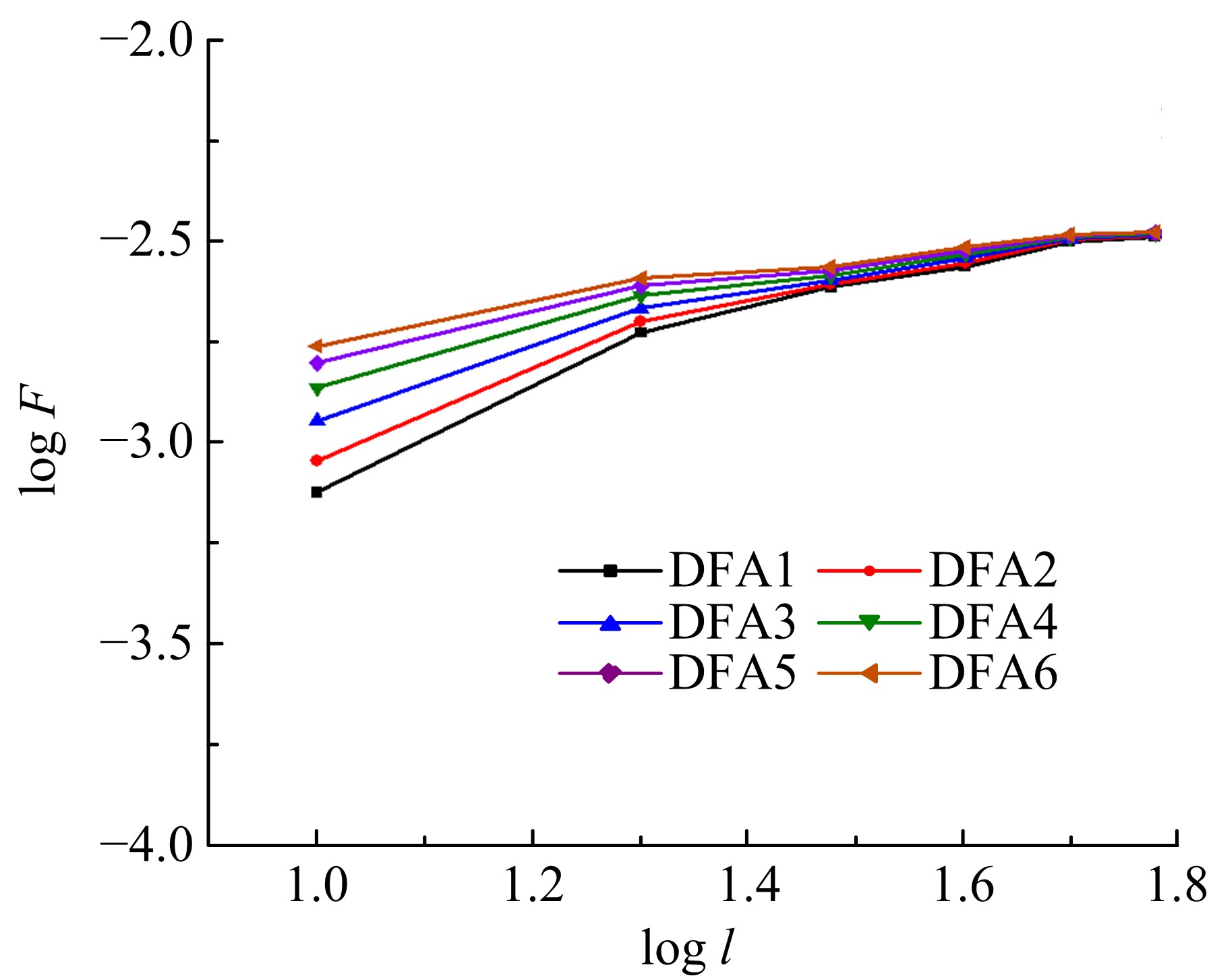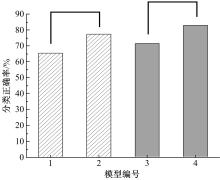吉林大学学报(工学版) ›› 2021, Vol. 51 ›› Issue (2): 557-564.doi: 10.13229/j.cnki.jdxbgxb20200061
• 交通运输工程·土木工程 • 上一篇
驾驶行为多重分形特征在驾驶疲劳检测中的应用
- 同济大学 同济大学道路与交通工程教育部重点实验室,上海 201804
Application of multi⁃fractal features of driving performance in driver fatigue detection
Shu-wei ZHANG( ),Zhong-yin GUO(
),Zhong-yin GUO( ),Zhen YANG,Ben-min LIU
),Zhen YANG,Ben-min LIU
- The Key Laboratory of Road and Traffic Engineering,Ministry of Education,Tongji University,Shanghai 201804,China
摘要:
本文旨在分析驾驶行为多重分形特征对驾驶疲劳检测模型的提升作用。利用UC-win/Road驾驶模拟软件采集行驶速度、加速度、方向盘转角和方向盘角速度等数据,并计算数据的均值、标准差和多重分形特征,比较不同特征的使用是否会对支持向量机(SVM)驾驶疲劳检测模型的精度造成影响。研究表明:在多重分形特征指标中,加速度的奇异强度与驾驶员疲劳状态相关性显著,且受时间窗宽度影响较小;加速度的奇异强度能帮助提高驾驶疲劳检测模型的精度,具有一定的应用价值。
中图分类号:
- U492.8
| 1 | 裴玉龙, 马艳丽.疲劳对驾驶员感知判断及操作特性的影响[J]. 吉林大学学报: 工学版, 2009, 39(5) : 1151-1156. |
| Pei Yu-long, Ma Yan-li. The effect of fatigue on driver's perception and operating characteristics [J]. Journal of Jilin University (Engineering and Technology Edition), 2009, 39(5): 1151-1156. | |
| 2 | Phillips R O, Kecklund G, Anund A, et al. Fatigue in transport: a review of exposure, risks, checks and controls[J]. Transport Reviews, 2017, 37(6):742-766. |
| 3 | 毛科俊, 赵晓华, 房瑞雪, 等. 驾驶疲劳声音对策有效性的驾驶模拟[J]. 吉林大学学报: 工学版, 2010, 40(6) : 1533-1537. |
| Mao Ke-jun, Zhao Xiao-hua, Fang Rui-xue, et al. Driving simulation of the effectiveness of driving fatigue sound countermeasures [J]. Journal of Jilin University (Engineering and Technology Edition), 2010, 40(6): 1533-1537. | |
| 4 | Ting P H, Hwang J R, Doong J L, et al. Driver fatigue and highway driving: a simulator study[J]. Physiology & Behavior, 2008, 94(3): 448-453. |
| 5 | 毛喆. 基于驾驶员生理特征分析的驾驶疲劳状态识别方法研究[D]. 武汉: 武汉理工大学计算机科学与技术学院, 2006. |
| Mao Zhe. Study on the recognition method of driving fatigue state based on the analysis of driver physiological characteristics[D]. Wuhan: School of Computer Science and Technology, Wuhan University of Technology, 2006. | |
| 6 | 黄皓. 基于驾驶操作及车辆状态的疲劳驾驶行为检测研究[D]. 南京: 东南大学交通学院, 2016. |
| Huang Hao. Research on fatigue driving behavior detection based on driving operation and vehicle status[D]. Nanjing: College of Transportation, Southeast University, 2016. | |
| 7 | 张晖. 基于驾驶行为的疲劳状态识别研究[D]. 武汉: 武汉理工大学能源与动力工程学院, 2009. |
| Zhang Hui. Research on fatigue state recognition based on driving behavior[D]. Wuhan: School of Energy and Power Engineering, Wuhan University of Technology, 2009. | |
| 8 | 吴超仲, 张晖, 毛喆, 等. 基于驾驶操作行为的驾驶员疲劳状态识别模型研究[J]. 中国安全科学学报, 2007, 17(4): 162-165. |
| Wu Chao-zhong, Zhang Hui, Mao Zhe, et al. Research on driver fatigue recognition model based on driving operation behavior[J]. Chinese Journal of Safety Science, 2007, 17(4): 162-165. | |
| 9 | 胥川, 裴赛君, 王雪松. 基于无侵入测量指标的个体差异化驾驶疲劳检测[J]. 中国公路学报, 2016, 29(10): 118-125. |
| Xu Chuan, Pei Sai-jun, Wang Xue-song. Individual differential driving fatigue detection based on non-intrusive measurement index[J]. China Journal of Highway and Transport, 2016, 29(10): 118-125. | |
| 10 | 金雪. 基于驾驶行为的疲劳驾驶检测方法研究[D]. 北京: 北京工业大学城市交通学院, 2015. |
| Jin Xue. Research on fatigue driving detection method based on driving behavior[D]. Beijing: School of Urban Transportation, Beijing University of Technology, 2015. | |
| 11 | 李兆飞, 柴毅, 李华锋. 多重分形去趋势波动分析的振动信号故障诊断[J]. 华中科技大学学报: 自然科学版, 2012, 40(12) : 5-9, 17. |
| Li Zhao-fei, Chai Yi, Li Hua-feng. Fault diagnosis of vibration signals based on multi-fractal detrending wave analysis[J]. Journal of Huazhong University of Science and Technology (Natural Science Edition),2012, 40(12): 5-9, 17. | |
| 12 | 胡江, 苏怀智, 马福恒, 等. MF-DFA在大坝安全监测序列分析和整体性态识别中的应用[J]. 水利水电科技进展, 2014, 34(3): 50-55. |
| Hu Jiang, Su Huai-zhi, Ma Fu-heng, et al. Application of MF-DFA in dam safety monitoring sequence analysis and overall behavior identification[J]. Advances in Science and Technology of Water Resources and Hydropower, 2014, 34(3): 50-55. | |
| 13 | Peng C K, Havlin S, Stanley H E, et al. Quantification of scaling exponents and crossover phenomena in nonstationary heartbeat time series[J]. Chaos, 1995, 5(1): 82-87. |
| 14 | Kantelhardt J W, Zschiegner S A, Braun P, et al. Multifratal detrended fluctuation analysis of nonstationary time series[J]. Physica A: Statistical Mechanics and its Applications, 2002, 316(1-4):87-114. |
| 15 | Larue G S, Rakotonirainy A, Pettitt A N. Driving performance impairment due to hypovigilance on monotonous roads[J]. Accident Analysis and Prevention, 2011, 43(6): 2037-2046. |
| 16 | Åkerstedt T, Gillberg M. Subjective and objective sleepiness in the active individual[J]. International Journal of Neuroscience, 1990, 52(1/2): 29-37. |
| 17 | Ingre M, Akersted T, Peters B, et al. Subjective sleepiness, simulated driving performance and blink duration: examining individual differences[J]. Journal of Sleep Research, 2006, 15(1): 47-53. |
| 18 | Baccarini L M R, Rocha e Silva V V, de Menezes B R, et al. SVM practical industrial application for mechanical faults diagnostic[J].Expert Systems with Applications, 2011, 38(6): 6980-6984. |
| 19 | 谢宏, 杨硕富, 夏斌, 等. 基于支持向量机的驾驶疲劳脑电特征递增选择算法研究[J]. 生物医学工程学杂志, 2013, 30(6): 1321-1325. |
| Xie Hong, Yang Shuo-fu, Xia Bin, et al. Research on incremental selection algorithm of EEG features in driving fatigue based on support vector machine[J]. Journal of Biomedical Engineering, 2013, 30(6): 1321-1325. | |
| 20 | 王振华, 贾银山, 陈兴. 基于SVM的驾驶员疲劳检测研究[J]. 科学技术与工程, 2011(8): 1828-1832. |
| Wang Zhen-hua, Jia Yin-shan, Chen Xing. Research on driver fatigue detection based on SVM[J]. Science Technology and Engineering, 2011(8): 1828-1832. | |
| 21 | 王琳虹, 李世武, 高振海, 等. 基于粒子群优化与支持向量机的驾驶员疲劳等级判别[J]. 哈尔滨工业大学学报, 2014, 46(12): 102-107. |
| Wang Lin-hong, Li Shi-wu, Gao Zhen-hai, et al. Discrimination of driver fatigue level based on particle swarm optimization and support vector machine[J]. Journal of Harbin Institute of Technology, 2014, 46(12): 102-107. |
| [1] | 李阳,王连俊. 高铁站场宽路基复合地基二维模型适用性分析[J]. 吉林大学学报(工学版), 2020, 50(2): 621-630. |
| [2] | 凌建明,陈卉,钱劲松,周定. 湿度有限波动下非饱和黏土路基动态回弹模量[J]. 吉林大学学报(工学版), 2020, 50(2): 613-620. |
| [3] | 万平,吴超仲,马晓凤. 基于ROC曲线和驾驶行为特征的驾驶愤怒强度判别阈值[J]. 吉林大学学报(工学版), 2020, 50(1): 121-131. |
| [4] | 徐进, 陈薇, 周佳, 罗骁, 邵毅明. 汽车转向盘操作与驾驶负荷的相关性[J]. 吉林大学学报(工学版), 2017, 47(2): 438-445. |
| [5] | 王海玮, 温惠英, 刘敏. 夜间环境驾驶员精神负荷的生理特性评估与实验[J]. 吉林大学学报(工学版), 2017, 47(2): 420-428. |
| [6] | 严利鑫, 黄珍, 朱敦尧, 陈志军, 冉斌. 基于马尔科夫毯和隐朴素贝叶斯的驾驶行为险态辨识[J]. 吉林大学学报(工学版), 2016, 46(6): 1851-1857. |
| [7] | 付锐,马勇,郭应时,袁伟,孙浩. 基于实车试验数据的换道预警规则[J]. 吉林大学学报(工学版), 2015, 45(2): 379-388. |
| [8] | 廖军洪, 邵春福, 邬洪波, 孙轶轩, 王书灵. 公路三维动态视距计算方法及评价技术[J]. 吉林大学学报(工学版), 2013, 43(03): 640-645. |
| [9] | 高吕和, 田晶晶, 李世武, 孙文财. 基于事故树分析的车辆安全状态模糊综合评价模型[J]. 吉林大学学报(工学版), 2011, 41(增刊1): 95-100. |
| [10] | 李显生, 任园园, 席建锋, 左淑霞. 非强制性控速设施下的驾驶员速度控制模型[J]. 吉林大学学报(工学版), 2010, 40(增刊): 169-0173. |
| [11] | 毛科俊, 赵晓华, 房瑞雪, 荣建, 刘小明. 驾驶疲劳声音对策有效性的驾驶模拟[J]. 吉林大学学报(工学版), 2010, 40(06): 1533-1537. |
| [12] | 马社强,邵春福,刘东,王军利,马壮林. 基于差异驱动原理的道路交通安全评价[J]. 吉林大学学报(工学版), 2010, 40(04): 981-0985. |
| [13] | 冯浩,席建锋,矫成武 . 基于前视距离的路侧交通标志设置方法[J]. 吉林大学学报(工学版), 2007, 37(04): 782-785. |
|
||



